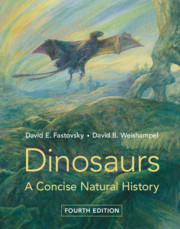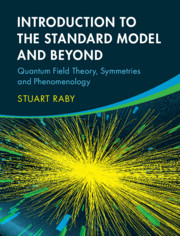Refine search
Actions for selected content:
36808 results in Cambridge Textbooks

Dinosaurs
- A Concise Natural History
-
- Published online:
- 18 August 2021
- Print publication:
- 01 July 2021
-
- Textbook
- Export citation

Yatdjuligin
- Aboriginal and Torres Strait Islander Nursing and Midwifery Care
-
- Published online:
- 16 August 2021
- Print publication:
- 25 August 2021
-
- Textbook
- Export citation

Introduction to the Standard Model and Beyond
- Quantum Field Theory, Symmetries and Phenomenology
-
- Published online:
- 12 August 2021
- Print publication:
- 08 July 2021
-
- Textbook
- Export citation
Chapter 11 - Supersonic Flows Over Wings and Airplane Configurations
-
- Book:
- Aerodynamics for Engineers
- Published online:
- 04 September 2021
- Print publication:
- 12 August 2021, pp 577-648
-
- Chapter
- Export citation
Frontmatter
-
- Book:
- Aerodynamics for Engineers
- Published online:
- 04 September 2021
- Print publication:
- 12 August 2021, pp i-iv
-
- Chapter
- Export citation
Chapter 14 - Tools For Defining the Aerodynamic Environment
-
- Book:
- Aerodynamics for Engineers
- Published online:
- 04 September 2021
- Print publication:
- 12 August 2021, pp 776-792
-
- Chapter
- Export citation
Index
-
- Book:
- Aerodynamics for Engineers
- Published online:
- 04 September 2021
- Print publication:
- 12 August 2021, pp 816-827
-
- Chapter
- Export citation
Chapter 10 - Two-Dimensional, Supersonic Flows Around Thin Airfoils
-
- Book:
- Aerodynamics for Engineers
- Published online:
- 04 September 2021
- Print publication:
- 12 August 2021, pp 551-576
-
- Chapter
- Export citation
Contents
-
- Book:
- Aerodynamics for Engineers
- Published online:
- 04 September 2021
- Print publication:
- 12 August 2021, pp v-x
-
- Chapter
- Export citation
Chapter 8 - Dynamics of a Compressible Flow Field
-
- Book:
- Aerodynamics for Engineers
- Published online:
- 04 September 2021
- Print publication:
- 12 August 2021, pp 431-504
-
- Chapter
- Export citation
Credits
-
- Book:
- Aerodynamics for Engineers
- Published online:
- 04 September 2021
- Print publication:
- 12 August 2021, pp 812-815
-
- Chapter
- Export citation
Chapter 7 - Incompressible Flow About Wings of Finite Span
-
- Book:
- Aerodynamics for Engineers
- Published online:
- 04 September 2021
- Print publication:
- 12 August 2021, pp 341-430
-
- Chapter
- Export citation
Answers to Selected Problems
-
- Book:
- Aerodynamics for Engineers
- Published online:
- 04 September 2021
- Print publication:
- 12 August 2021, pp 807-811
-
- Chapter
- Export citation
Chapter 1 - Why Study Aerodynamics?
-
- Book:
- Aerodynamics for Engineers
- Published online:
- 04 September 2021
- Print publication:
- 12 August 2021, pp 1-32
-
- Chapter
- Export citation
Chapter 12 - Hypersonic Flows
-
- Book:
- Aerodynamics for Engineers
- Published online:
- 04 September 2021
- Print publication:
- 12 August 2021, pp 649-710
-
- Chapter
- Export citation
Chapter 3 - Dynamics of an Incompressible, Inviscid Flow Field
-
- Book:
- Aerodynamics for Engineers
- Published online:
- 04 September 2021
- Print publication:
- 12 August 2021, pp 88-165
-
- Chapter
- Export citation
Chapter 9 - Compressible, Subsonic Flows and Transonic Flows
-
- Book:
- Aerodynamics for Engineers
- Published online:
- 04 September 2021
- Print publication:
- 12 August 2021, pp 505-550
-
- Chapter
- Export citation
Appendix A - The Equations Of Motion Written in Conservation Form
-
- Book:
- Aerodynamics for Engineers
- Published online:
- 04 September 2021
- Print publication:
- 12 August 2021, pp 793-798
-
- Chapter
- Export citation
Chapter 6 - Incompressible Flows Around Airfoils of Infinite Span
-
- Book:
- Aerodynamics for Engineers
- Published online:
- 04 September 2021
- Print publication:
- 12 August 2021, pp 294-340
-
- Chapter
- Export citation
Conversion Factors
-
- Book:
- Aerodynamics for Engineers
- Published online:
- 04 September 2021
- Print publication:
- 12 August 2021, pp 828-830
-
- Chapter
- Export citation
